 |
 |
 |
| |
Acceptable Cost of CAB-LA vs TDF/FTC for PrEP in South African Girls, Young Women
|
| |
| |
IAS 2023, July 23-26, 2023. Brisbane
Mark Mascolini
Long-acting injectable cabotegravir (CAB-LA) for preexposure prophylaxis (PrEP) would have to cost no more than twice the price of daily tenofovir disoproxil/emtricitabine (TDF/FTC) to be cost-effective in South African adolescent girls and young women (AGYW), according to an analysis by US and South African researchers [1]. The investigators argued that challenges to consistent daily oral PrEP adherence in this population and others highlight the need for more conveniently administered PrEP agents like long-acting injectables.
Because HIV incidence remains high in South African AGYW, at an estimated 3 to 7 infections per 100 person-years, these investigators asked "how much should we be willing to pay for the improved efficacy of CAB-LA over oral daily TDF/FTC PrEP" in cisgender African women? HPTN 084, a randomized double-blind trial in 7 sub-Saharan African countries, found CAB-LA injected every 8 weeks superior to daily TDF/FTC in preventing HIV infection in cisgender women [2].
The cost-effectiveness study aimed to figure how much CAB-LA could cost while remaining cost-effective by comparing two strategies in South African AGYW 15 to 30 years old: injectable CAB-LA and daily oral TDF/FTC. The research team used the Cost-Effectiveness of Preventing AIDS Complications (CEPAC) model in simulating a population of cisgender AGYW similar to those enrolling in FastPrEP in a district of Cape Town. They used an approach similar to that created for a cost-effectiveness analysis of CAB-LA and TDF/FTC in the United States [3].
The simulated population had two cohorts-a primary cohort of cisgender AGYW and a cisgender male cohort. Researchers scaled results to a population of 10,000 AGYW. Outcomes were averted HIV transmissions, life-years, costs, and incremental cost-effectiveness ratio (ICER), which is calculated as the difference in costs divided by the difference in life-years for each strategy compared with the next most expensive strategy. The investigators considered clinical benefits and costs over a 10-year horizon.
The key outcome was the maximum price premium of CAB-LA, the highest annual drug price at which CAB-LA versus TDF/FTC would have an ICER below $3500 per life-year, which is 50% of South Africa's per capita gross domestic product (GDP). A lower maximum price premium means we would be willing to pay less for CAB-LA, while a higher maximum price premium means we would be willing to pay more for CAB-LA.
Model parameters based on reasonable sources included an average age of 26 years, 660 cumulative primary HIV transmissions attributable to AGYW, an HIV incidence of 3.2 per 100 person-years without PrEP, an HIV incidence of 1.9 per 100 person-years with TDF/FTC, and an HIV incidence of 0.2 per 100 person-years with CAB-LA PrEP. The researchers set 2-year PrEP program retention at 88% for TDF/FTC and 85% for CAB-LA, and they set annual drug costs at $40 for TDF/FTC and $80 for CAB-LA. A higher annual program cost for CAB-LA than TDF/FTC ($21 vs $12) reflected the higher cost of giving people injections.
The model yielded these results over the 10-year period: Incident HIV infections numbered 1980 with TDF/FTC versus 1080 with CAB-LA. Infections avoided with CAB-LA versus TDF/FTC gave CAB-LA users 150 more life-years (85,950 versus 85,800). Total cost proved higher with CAB-LA than with TDF/FTC ($7.1 million versus $6.6 million).
ICER for CAB-LA versus TDF/FTC came to $3440 per life-year, just below the $3500 per life-year ICER set as a threshold indicating the highest annual acceptable price for CAB-LA. With this willingness-to-pay threshold, maximum price premium of CAB-LA would be $40, compared with the price of oral TDF/FTC, which means an absolute price of $80 a year. If the analysis included potential benefits to cisgender male partners of AGYW, maximum price premium of CAB-LA would rise to $51 compared with oral TDF/FTC or an absolute price of $91 per year.
The primary analysis means CAB-LA would have to be priced at no more than twice the cost of daily TDF/FTC to be cost-effective compared with TDF/FTC in South African AGYW. The researchers added that making CAB-LA available within this range could "improve outcomes, access, and equity for adolescent girls and young women at risk for HIV in South Africa."
References
1. Jin EY, Ahmed AR, Bekker LG, et al. Long-acting HIV pre-exposure prophylaxis (PrEP) among adolescent girls and young women (AGYW) in South Africa: cost-effective at what cost? IAS 2023, July 23-26, 2023. Brisbane.
2. Delany-Moretlwe S, Hughes JP, Bock P, et al. Cabotegravir for the prevention of HIV-1 in women: results from HPTN 084, a phase 3, randomised clinical trial. Lancet. 2022;399:1779-1789. doi: 10.1016/S0140-6736(22)00538-4.
https://www.thelancet.com/journals/lancet/article/PIIS0140-6736(22)00538-4/fulltext
3. Neilan AM, Landovitz RJ, Le MH, et al. Cost-effectiveness of long-acting injectable HIV preexposure prophylaxis in the United States: a cost-effectiveness analysis. Ann Intern Med. 2022;175:479-489. doi: 10.7326/M21-1548. https://pubmed.ncbi.nlm.nih.gov/35099992/
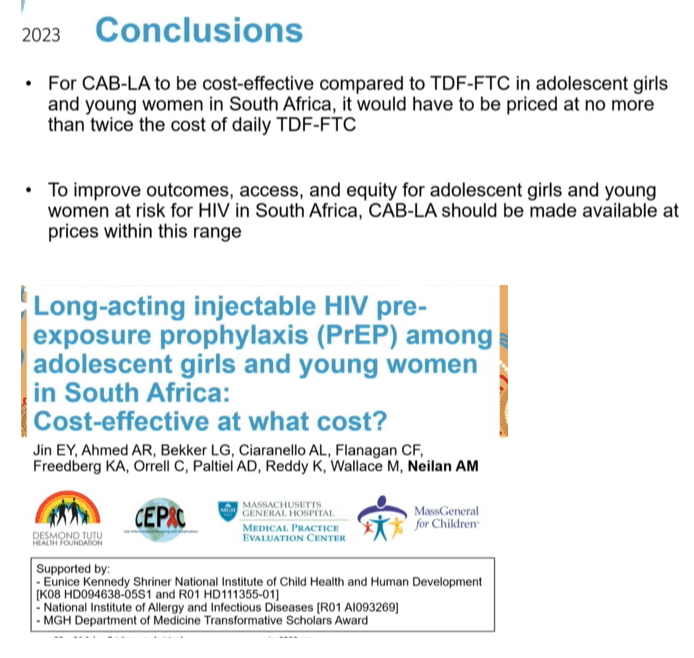
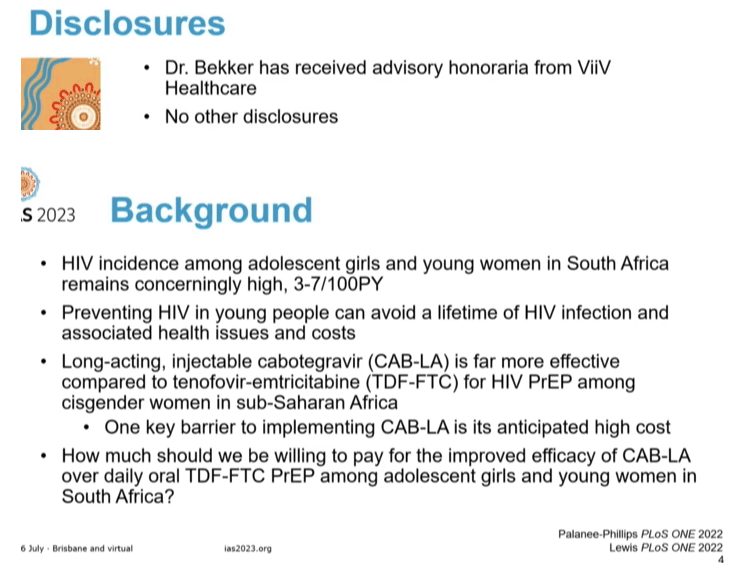
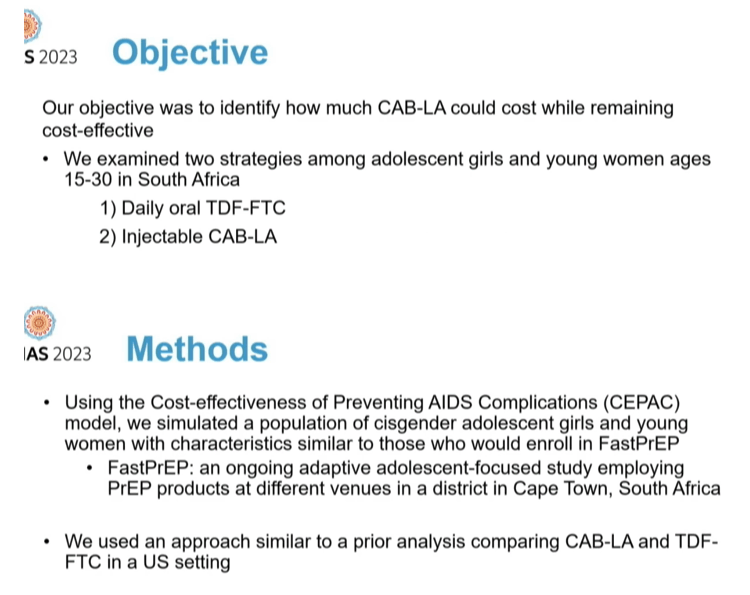
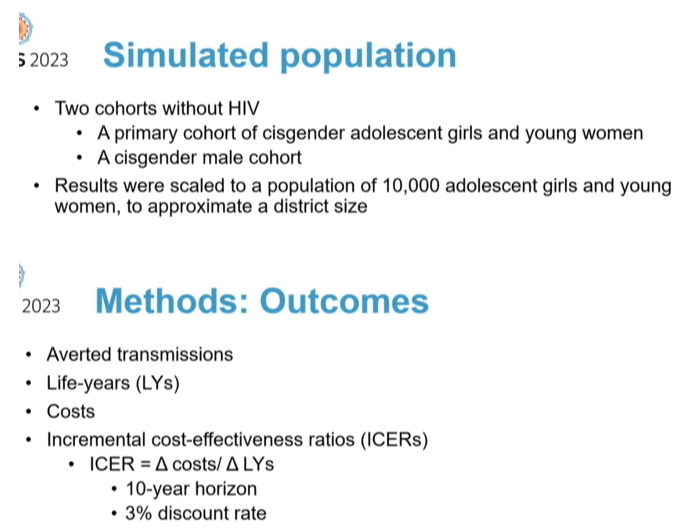
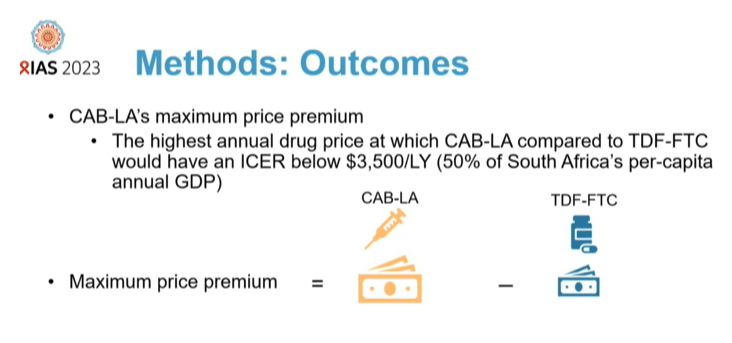
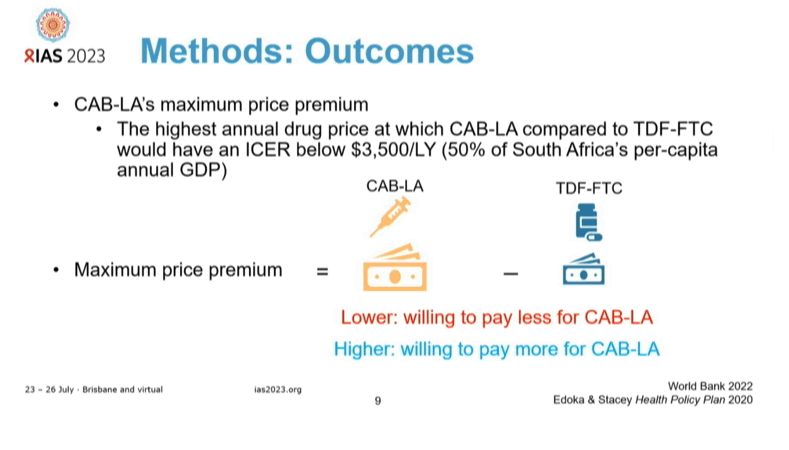
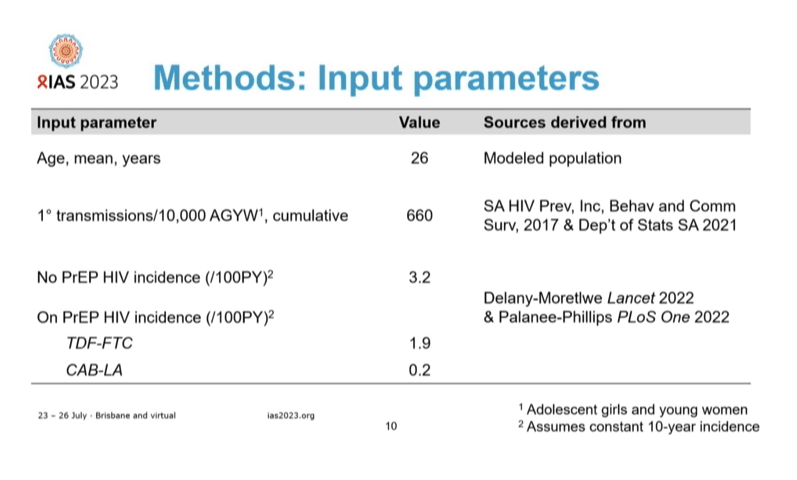
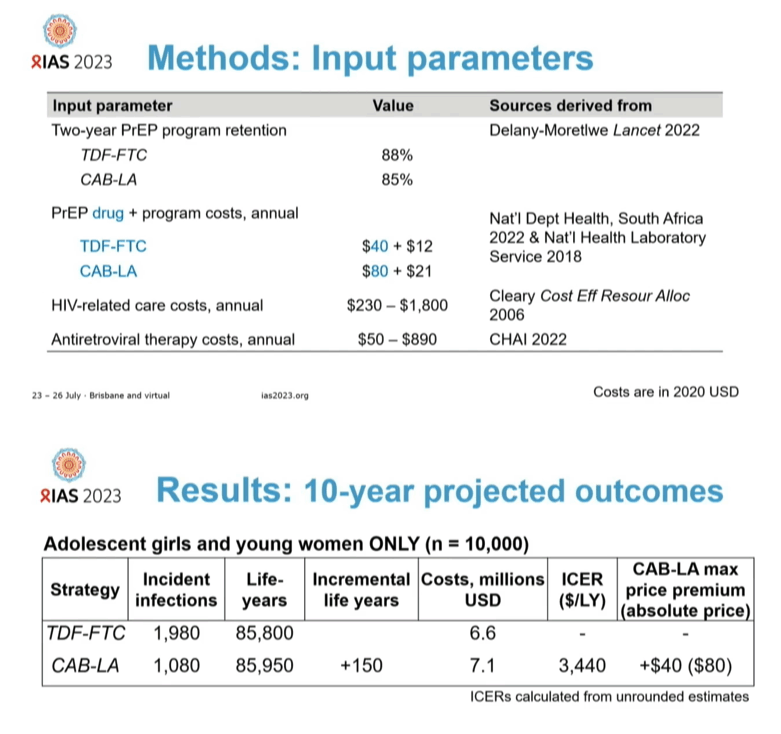


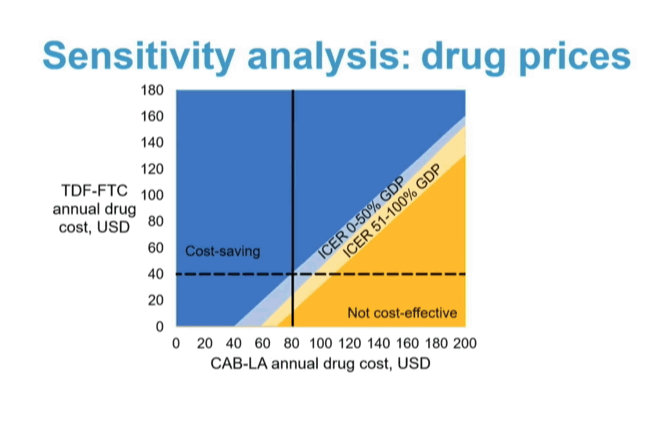
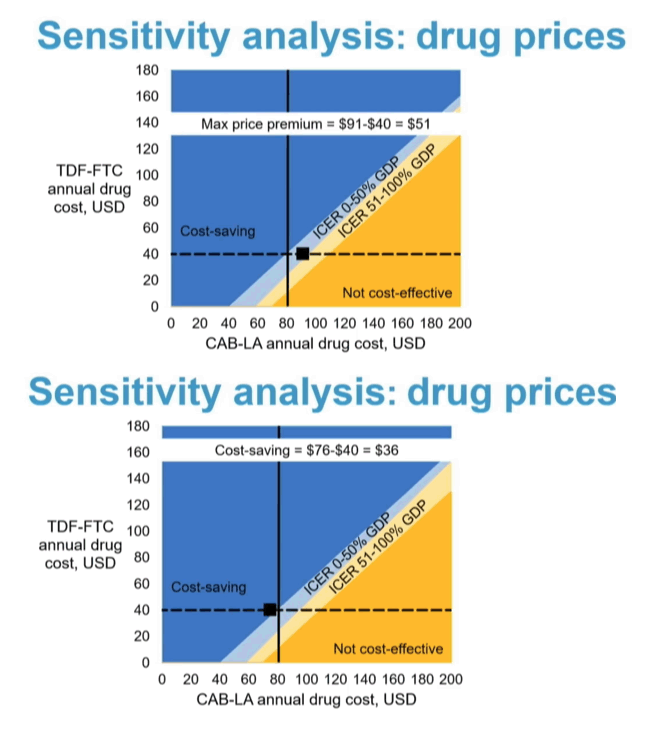
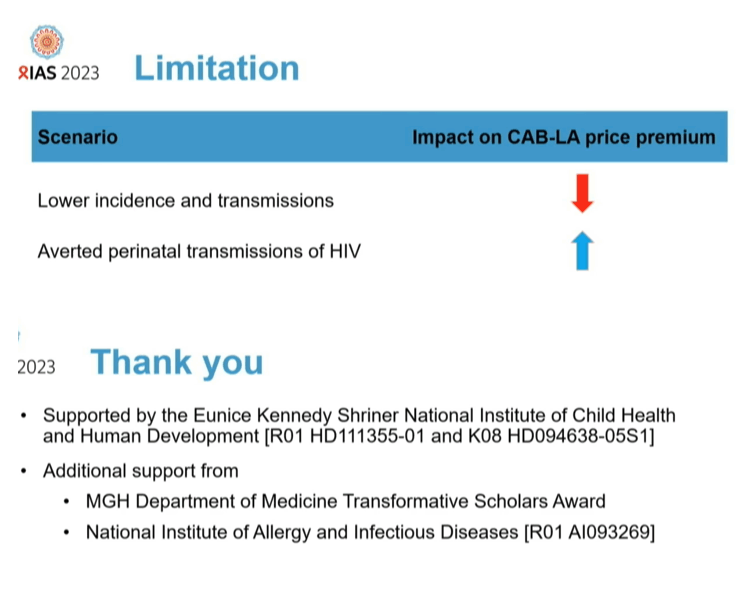
|
| |
|
 |
 |
|
|